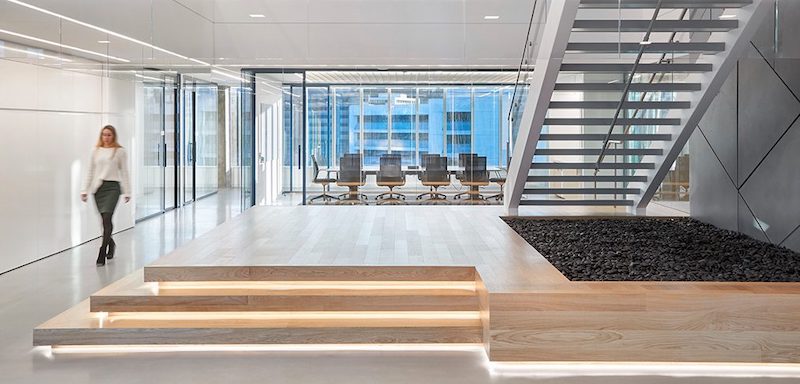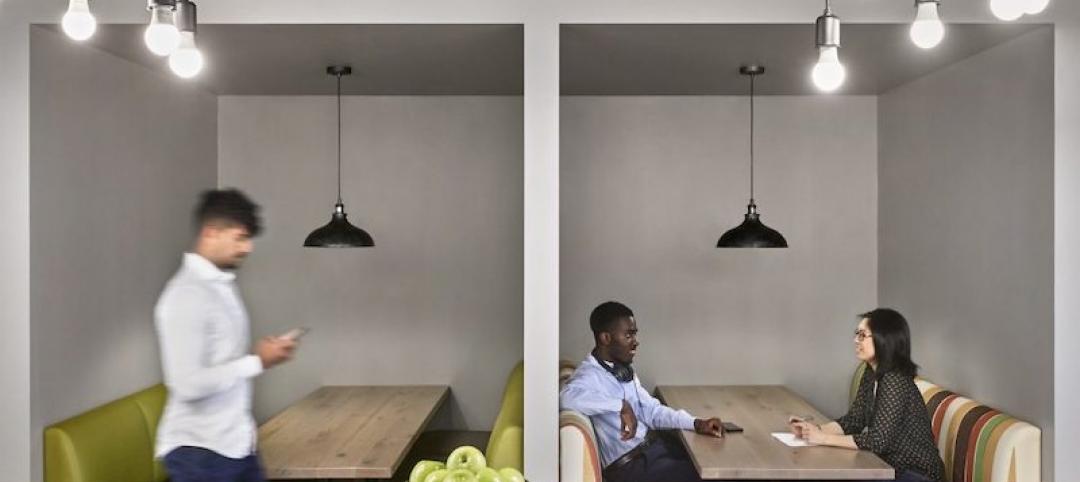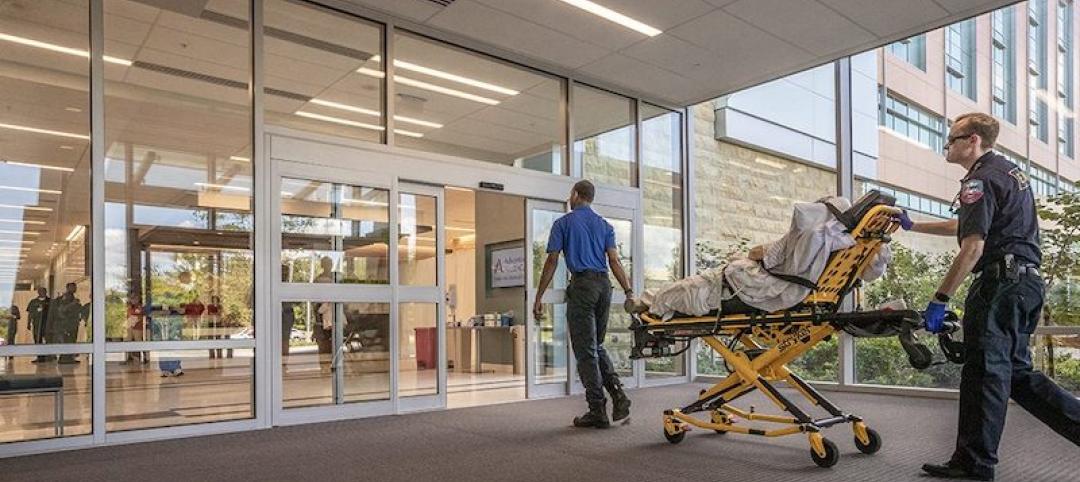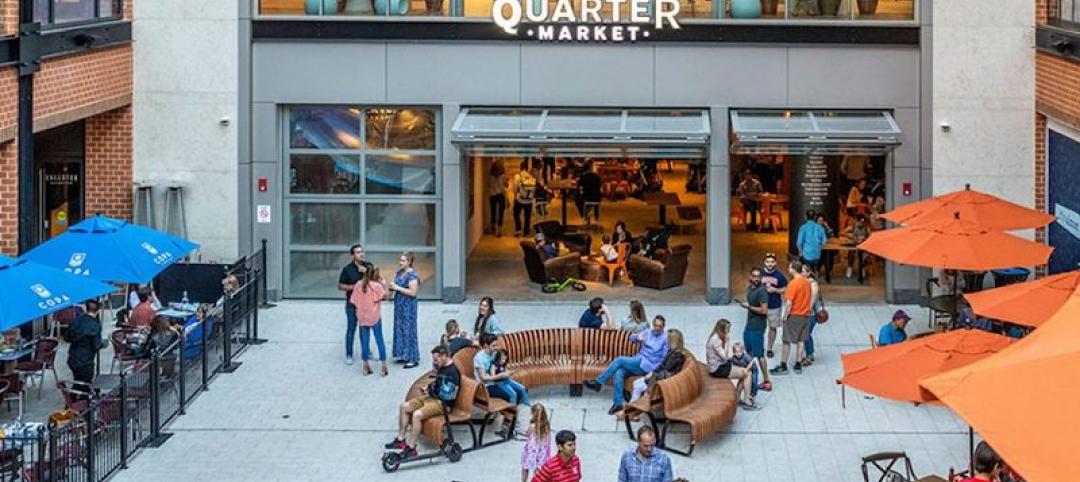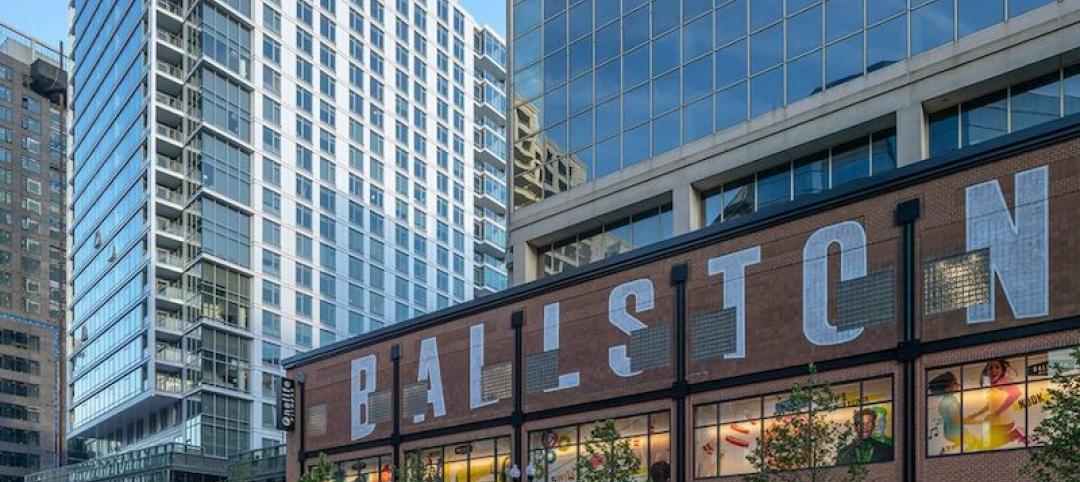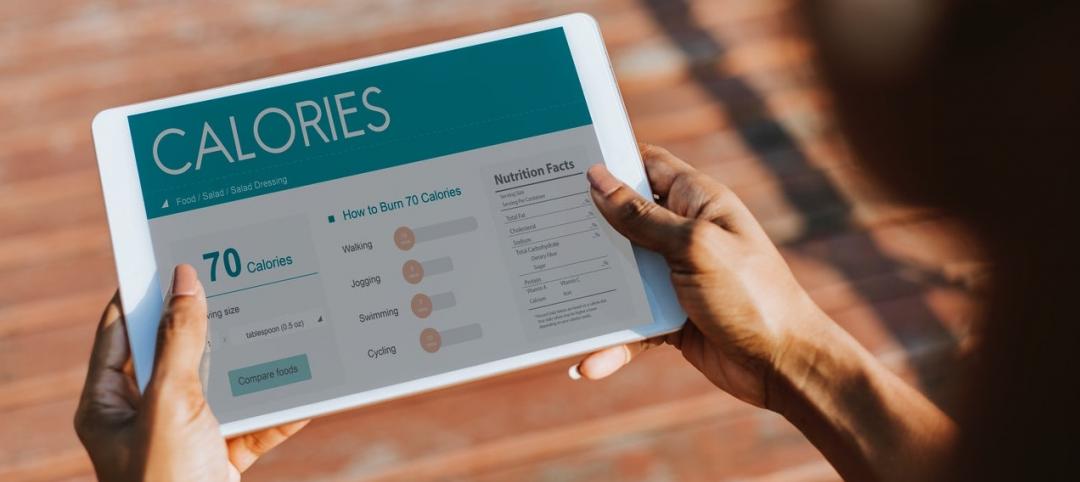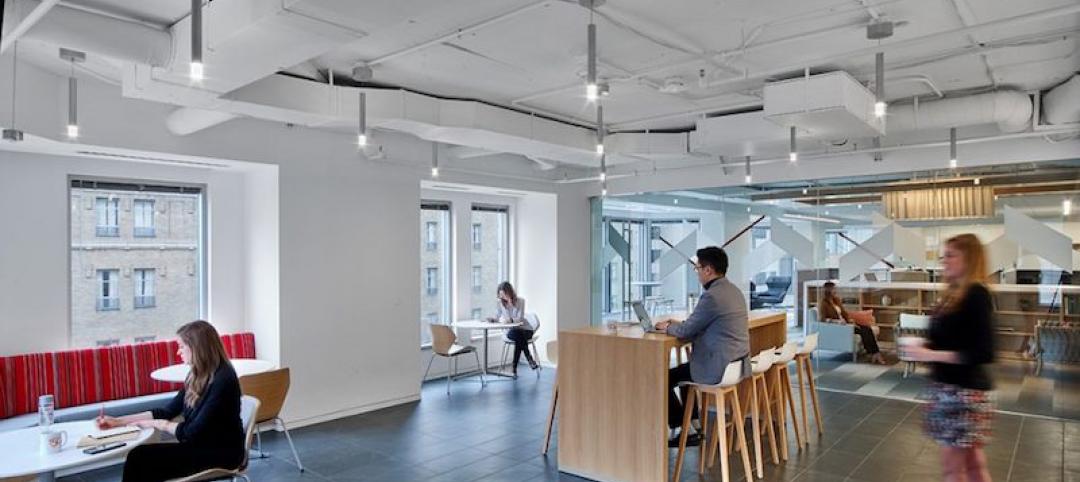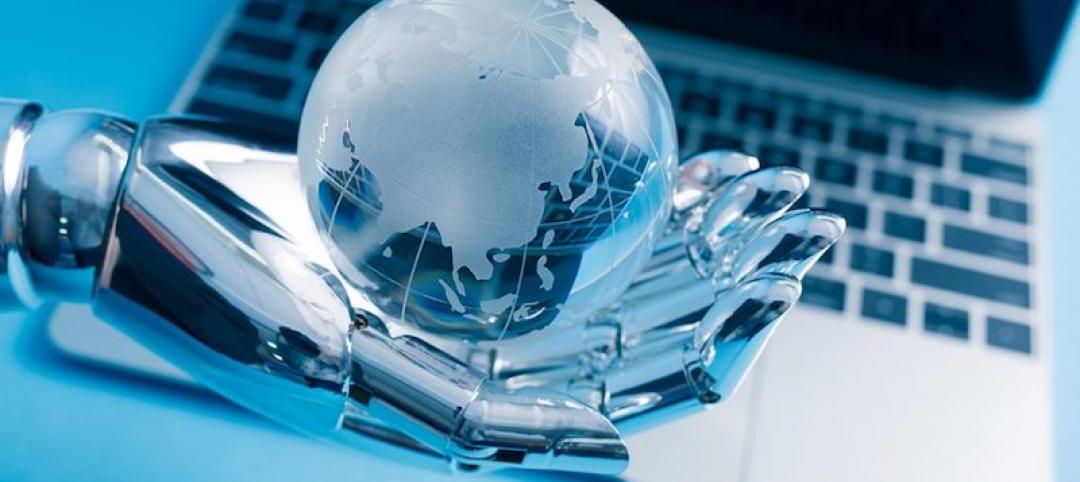As creative problem solvers, we’re facing what is surely the biggest challenge of our personal and professional lives. Across the globe, we’ve experienced mandatory quarantines, adopted new work-from-home policies and are well-versed in social distancing.
The lessons learned in the next few months can help shape how we work and design in the future. For now, remote work is different – and our new normal.
Here are seven takeaways from the last few weeks:
 Capital One Café & Lounge, Washington, DC.
Capital One Café & Lounge, Washington, DC.
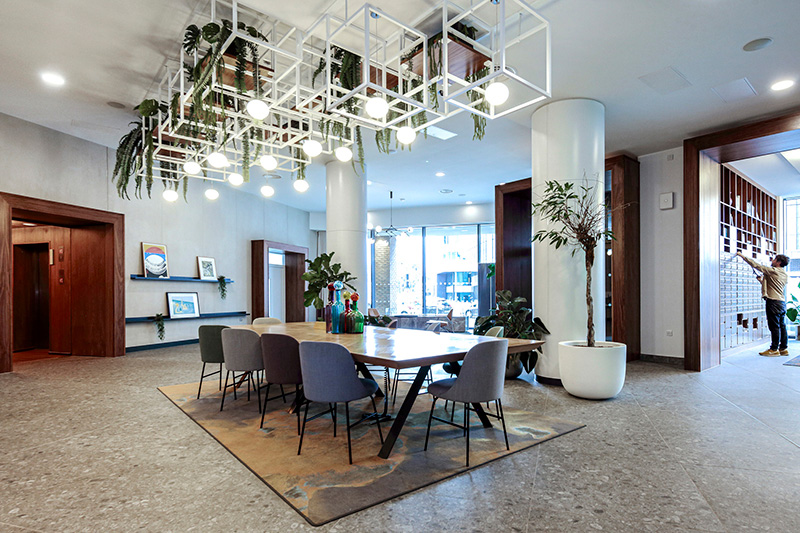 The Wullcomb, Leicester, UK.
The Wullcomb, Leicester, UK.
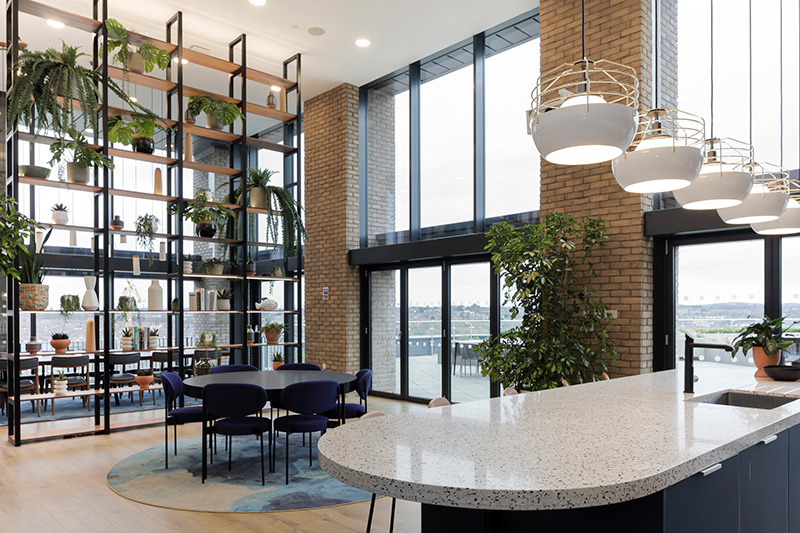 The Wullcomb, Leicester, UK.
The Wullcomb, Leicester, UK.
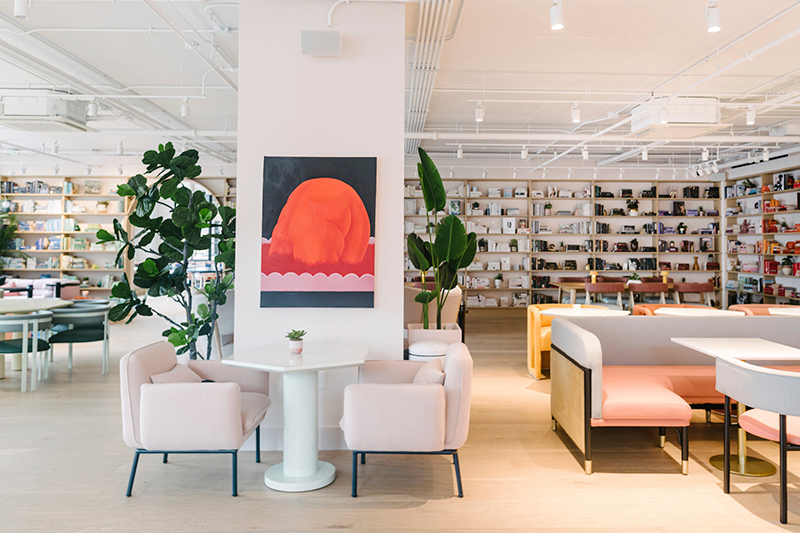 The Wing, Chicago, Ill.
The Wing, Chicago, Ill.
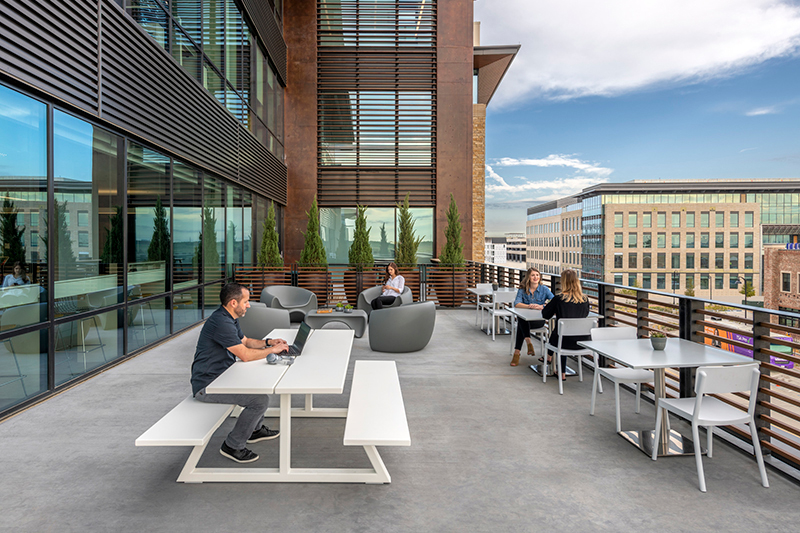 Nokia Regional Headquarters, Irving, Texas.
Nokia Regional Headquarters, Irving, Texas.
— Be there for your clients and coworkers. And mean it. Empathy drives how we interact in the world and in the projects we design. Working from home shines a very bright light on how much we need to connect with others. While you may have chatted casually with a colleague in the breakroom or a client on a weekly call, you may not know that they are living alone, experiencing depression or caring for a virus-susceptible loved one. These are just not the things that we generally talk about in the world of budgets and deadlines, jet lag and project wins. Pick up the phone, join a group chat, send a check-in email. The pandemic gives us an opportunity to reach out to create new avenues for community – in our day-to-day interactions, in our use of technology and in how we rethink the way we design.
— Embrace uncertainty. It’s often said that the best ideas come when we’re vulnerable. Now is the time to explore what post-virus industry sectors will look like, how we can respond to those needs and how we innovate design. “Working from home will certainly shake up the real estate community and as a result, workplace design,” says Jeanne Wood, director based in CRTKL’s London office. “From better policies to re-thinking square footage and desk ratios, working remotely has presented us with real opportunities to improve the workplace.”
“Additionally, by providing a mix of enclosed collaborative and individually focused spaces that are strategically placed throughout an open workspace, we can create a healthier and balanced work environment,” says Kim Heartwell, CRTKL senior vice president in the firm’s Washington, D.C. office.
— Practice radical sustainability and flexibility. Certainly, sustainability and flexibility will continue to play a significant role in design – whether it’s at home or in the traditional office. “Designing for workplace flexibility is not at odds with designing for sustainability – appropriate and adjustable lighting, air quality, access to natural light and views, the use of healthy and sustainable materials, and the incorporation of biophilic design in the workplace are easily integrated into a flexible work environment,” notes Heartwell.
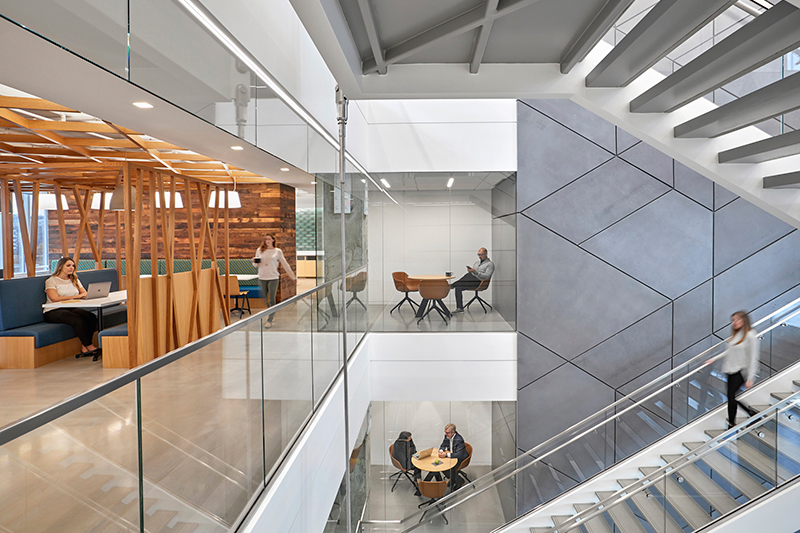 Appian Headquarters, Tyson’s Corner, VA
Appian Headquarters, Tyson’s Corner, VA
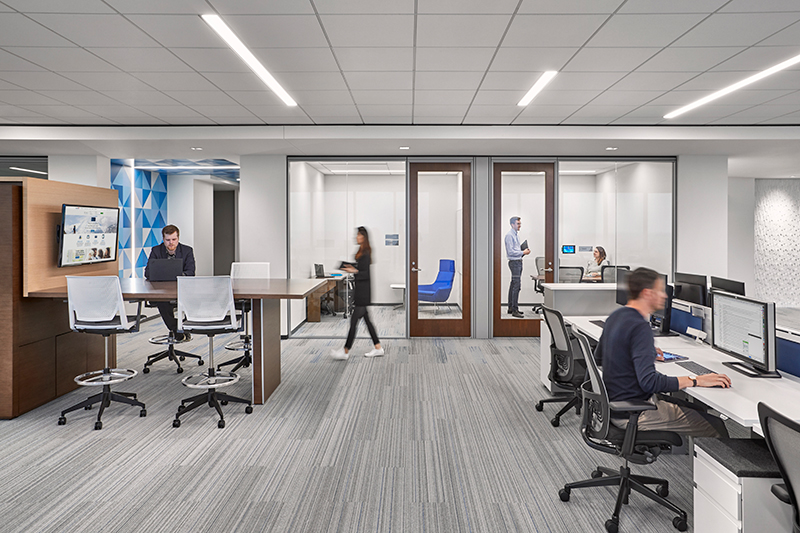 Capital One Corporate Campus Headquarters, McLean, Va.
Capital One Corporate Campus Headquarters, McLean, Va.
 Enjoy.com Headquarters, Palo Alto, Calif.
Enjoy.com Headquarters, Palo Alto, Calif.
Adds Pablo La Roche, associate vice president in Los Angeles, “As we design spaces, we always have to think about their climate impact. Now it is not only about doing less harm; designing living buildings that are climate-positive in their operation and construction. Flexible workspaces contribute to this goal with a reduced carbon footprint and a reduced lifecycle impact. We can be very productive while reducing our carbon footprint. This is an opportunity to return to better ways. When this pandemic ends, we will need to accelerate the economy, but it should be a clean economy. The workplace has to be part of this.”
— Learn from other industries. Many of our clients’ industries – healthcare, retail, hospitality and residential — have often had to rethink and retool the ways they do business. The tech world is constantly reinventing itself to respond to the needs of its customers. And they often look to designers for user experience inspiration. “It could be taking advantage of smart home technology to disinfect your clothes closet or taking cues from the healthcare industry by using anti-microbial surfaces in the workplace,” says Wood. “Incorporating new materials and technologies is key to meeting user needs.”
— Rethink WFH. From an environmental standpoint, La Roche believes we should question how to design better work environments at home. “We need more connectivity and faster networks,” he says. “Additionally, the design of the building envelope as an interface between interior and exterior is critical. Do we need more daylight in our homes and workspaces? What about views?”The new WFH model also presents opportunities for working differently as a firm and with clients. “We should consider a hot desk model, where appropriate, with smaller physical offices around the globe,” suggests Hong Kong-based Senior Vice President Darryl Custer. “As a reference, the CRTKL Hong Kong team is successfully working within an Arcadis HK hot desk environment. The benefits of lower rent costs can be applied to the higher tech costs.” Fan Guo, vice president in CRTKL’s Beijing office notes, “WFH really blurs the physical boundaries between offices, between our teams, consultants and our clients. There is no ‘one group sits on one side of the table’-type of situation. People exchange ideas more freely and are more empathetic toward one another.”Examples of open, light- and biophilia-filled, and collaborative design include the residential Wullcomb in Leicester, UK and the co-working space, The Wing in Chicago. Both have been designed to help foster strong senses of community and connectivity.
— Plan for the future. Whether you’re a glass half empty or a glass half full person, this crisis will pass. And we need to be prepared for what’s next. What are the questions that we can ask right now about our working environment? What are the opportunities for working differently as a firm and with clients? How do we implement those changes? And how do we distinguish ourselves with our ideas?“We’re now questioning what brings the best out of people in a work environment. The traditional ‘one-size-fits-all’ office space or what we are experiencing now?” says Guo. “Will the pendulum swing back to enclosed offices and high-paneled assigned cubicles, or will companies embrace this newfound ability to work remotely, prompting more shared spaces (with some clear hygiene policies)?”Adds Jodi Williams, senior associate vice president in the firm’s Washington, D.C. office, “Will coworking and serviced offices go away due to lack of trust in strangers and fear of unsanitary conditions or increase as we need more social connections but don’t need as much dedicated office space?”
— Envision happiness. Notes Katie Sprague, Senior Vice President in Los Angeles, “The future of design is always uncertain. But the innate human desire for happiness will always remain.” In response, CallisonRTKL, along with our partners Delivering Happiness and DMG Mountain View, have spearheaded a program called Happiness by Design, a methodology to measure and apply happiness in the built environment that puts people at the forefront of the design process.
Riding out the COVID-19 storm has shown us that we can work productively and collaboratively from anywhere. Whether you’re reading this from your kitchen table, basement, spare bedroom or a dedicated home office, weigh in on how you think WFH will affect the future of workplace design.
More from Author
CallisonRTKL | Dec 20, 2021
Digital nomads are influencing design
As our spaces continue to adapt to our future needs, we’ll likely see more collaborative, communal zones where people can relax, shop, and work.
CallisonRTKL | Jun 30, 2020
The great reset and our new work life
As many countries begin to return to the office, it’s a chance to ask ourselves: what do we truly value?
CallisonRTKL | Feb 26, 2020
Sustainability in a material world
The concepts of embodied carbon, zero waste, and deconstruction and reuse often run on parallel tracks.
CallisonRTKL | Jan 30, 2020
The complex dance of healthcare transitioning
Hospital employees, though excited about technological advancements, are expected to navigate a new workplace and care for their patients at the same time, all while training on new equipment and navigating a new building.
CallisonRTKL | Jan 6, 2020
Retail re-invention: Five questions to ask
Why have some malls survived their long-predicted demise, thriving and bumping with new generations of shoppers, while others have been relegated to the ash heap of deadmalls.com?
CallisonRTKL | Aug 6, 2019
Saving the American mall in 5 steps
CallisonRTKL Vice President Marc Fairbrother explains how struggling American malls can turn it all around.
CallisonRTKL | May 29, 2019
Smart buildings can optimize wellness
Employees want wellness initiatives built into their work experience, especially when they’re in spaces that can leave them feeling stiff, stressed, and sick.
CallisonRTKL | Apr 5, 2019
2019 trends in the workplace
From retention and career advancement to the ethics of inclusion and diversity, these five trends will play a major role this year in design, strategic planning and workplace development.
CallisonRTKL | Jan 28, 2019
9 tech trends to track in 2019
Innovations in voice recognition, cognitive neuroscience, and biometrics are among the trending tech topics for 2019, according to CallisonRTKL's Kristin Tilley.
CallisonRTKL | Dec 3, 2018
Biotrack your shop
Sabrina Hilfer, a specialty retail designer, talks about the integration of biometrics in the retailscape.

